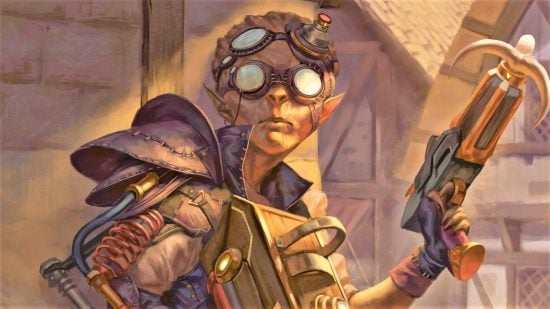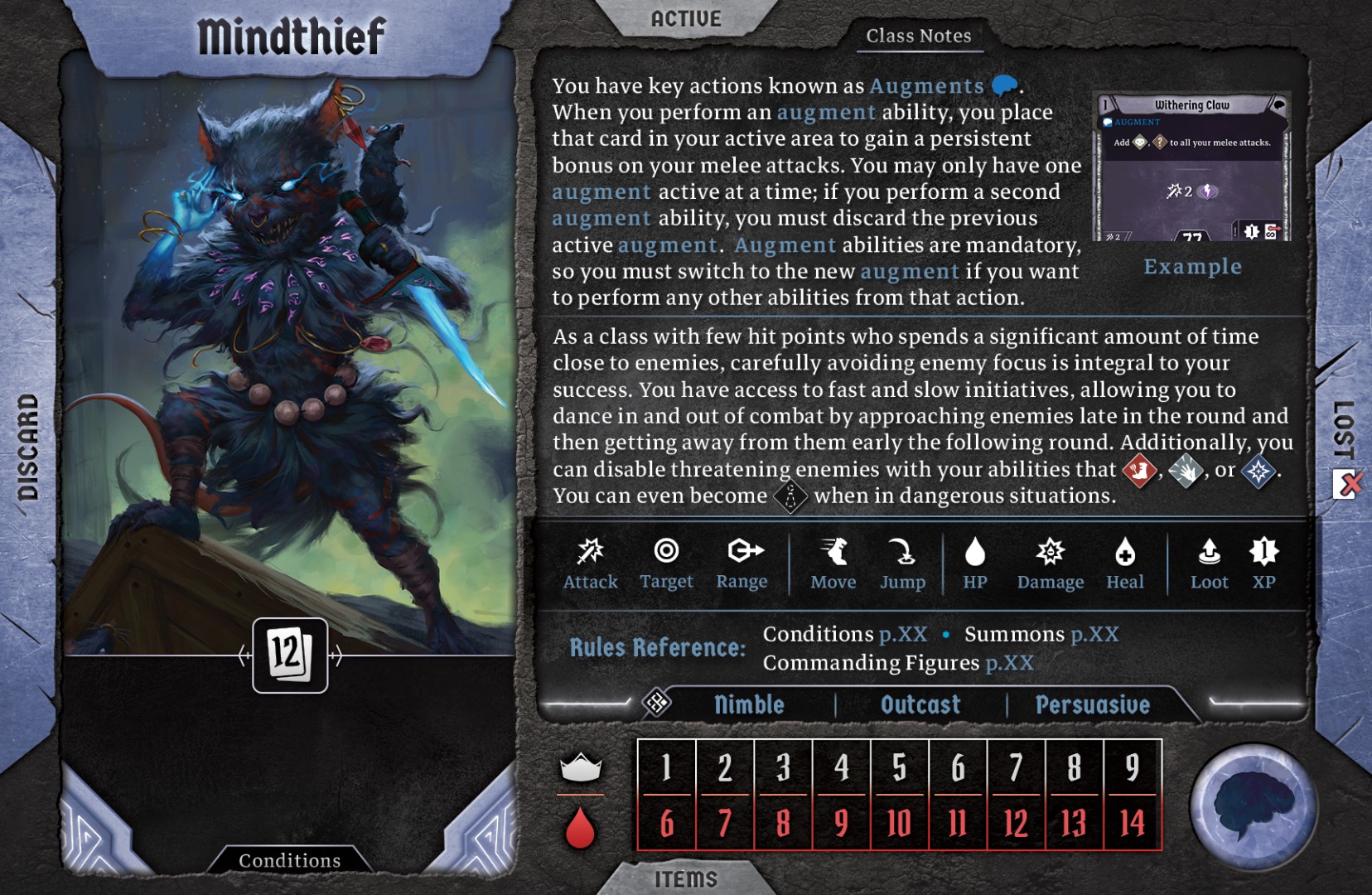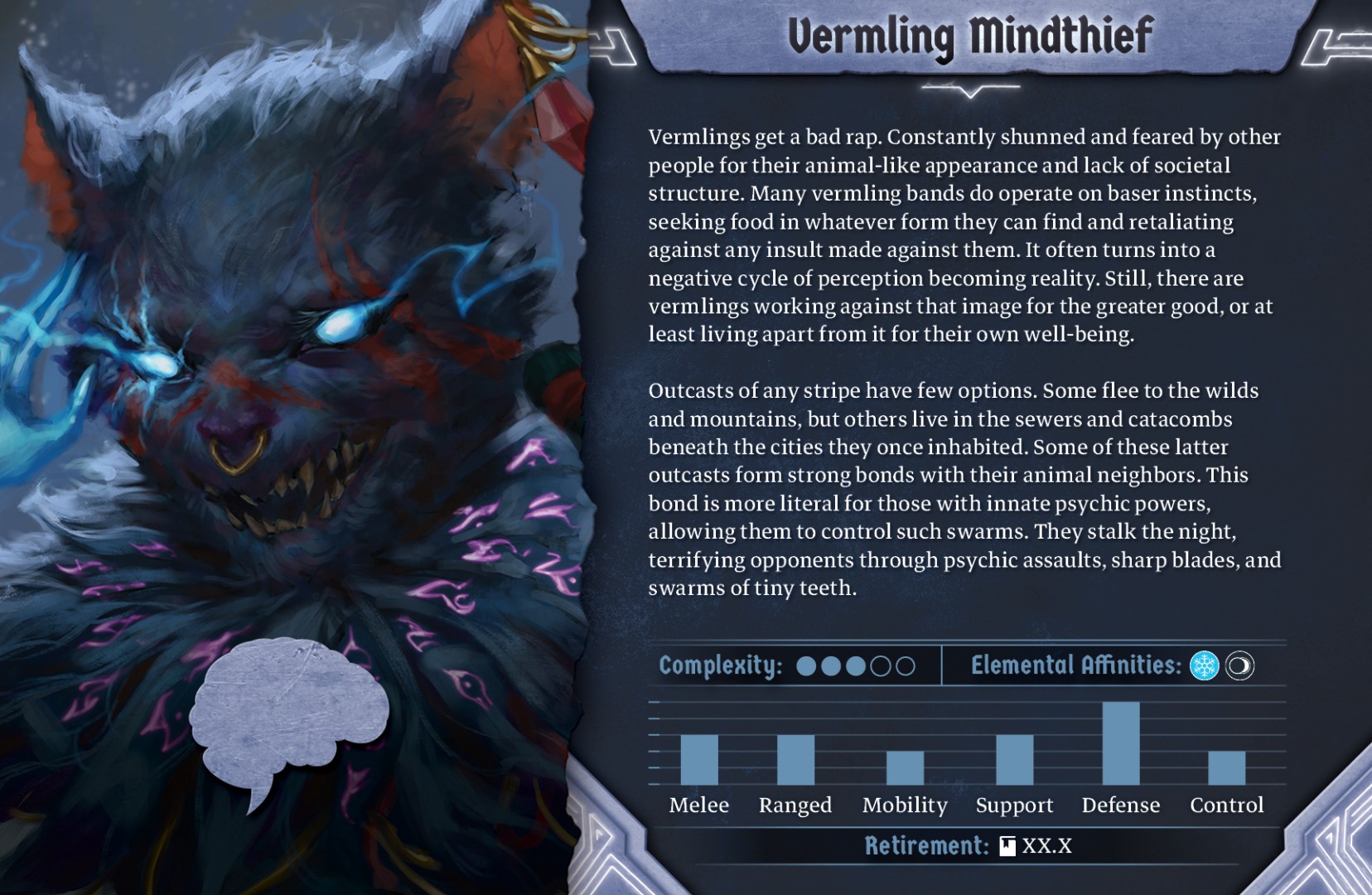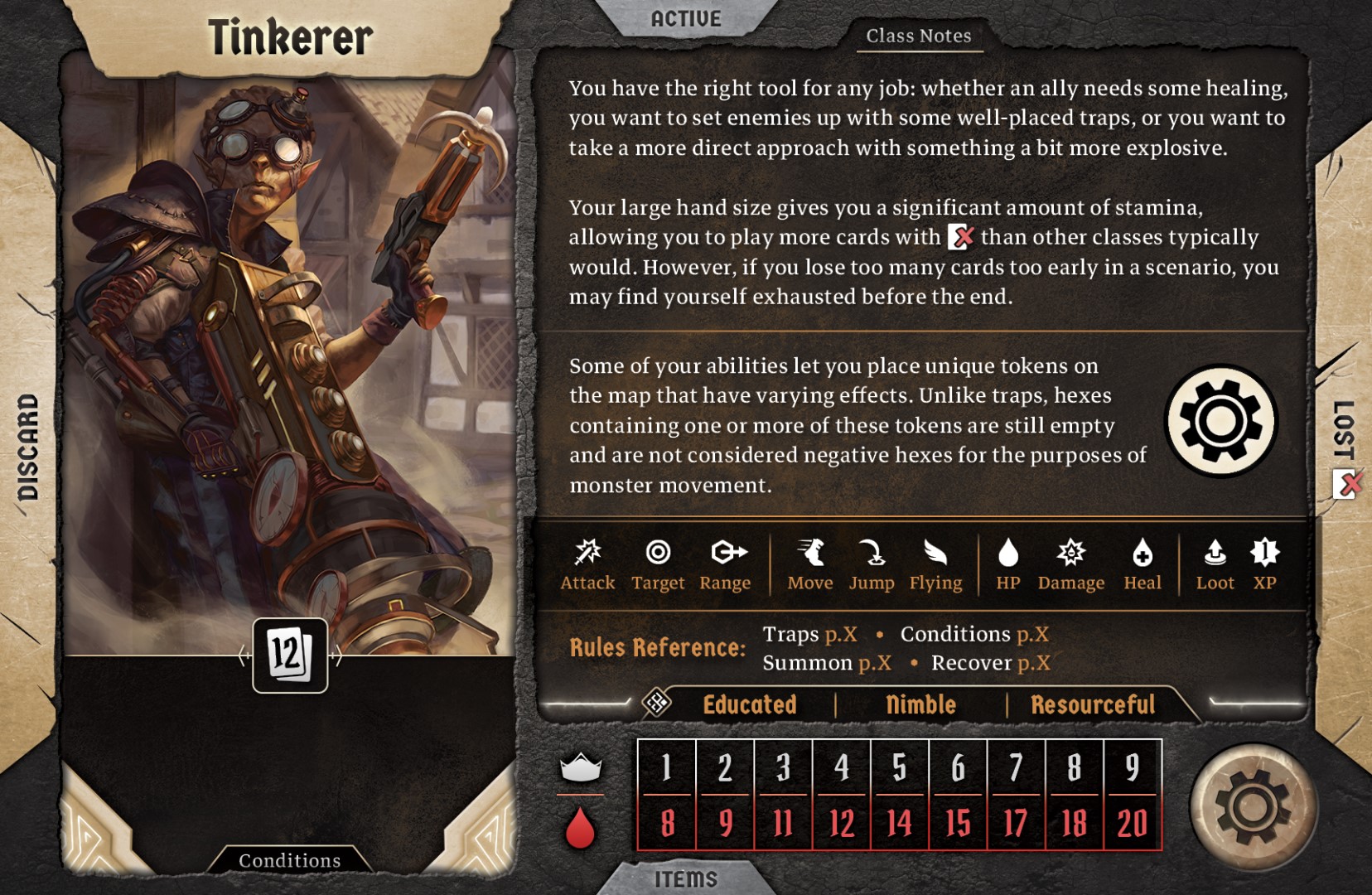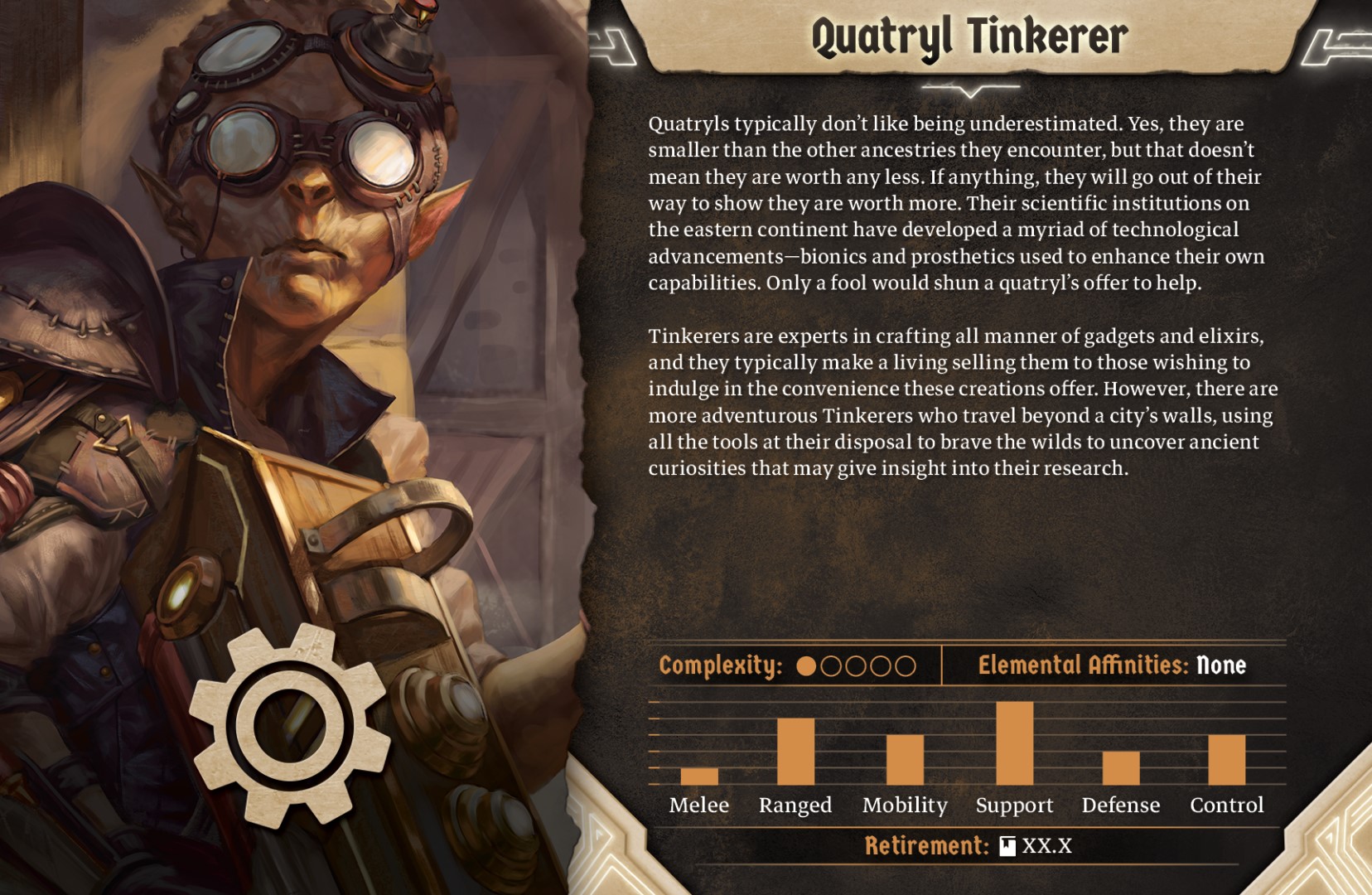Cephalofair is reworking each of the Gloomhaven classes in a new, revised edition of the groundbreaking board game. Creator Isaac Childres tells Wargamer each of the playable characters has been “rebalanced” as “some characters felt pretty overpowered compared to others.” From what he tells us, it seems most Gloomhaven classes have seen nerfs to improve gameplay.
Gloomhaven was first released in 2017, and many see it as one of the best board games ever made. It even spent five years at the top of the rankings on BoardGameGeek (only losing its crown in recent months).
No game is perfect, though. Childres knows this; in a press release announcing the new edition from June 1, he says “While Gloomhaven is well-loved, I’m not sure anyone would call it perfect”. He’s been overseeing and playtesting this new edition, while the new class designs come from Drew Penn and Dennis Vögele, who are credited as the game’s joint designers.
Of the starting Gloomhaven classes, Childres name-drops three that have seen significant tweaks: the Spellweaver, the Mindthief, and the Tinkerer. “The Spellweaver took a lot of work”, he tells Wargamer, “but it still feels very similar to what it was before”. “It’s still an eight-card class with that central mechanic of Reviving Ether, but it took a lot of work to make her abilities feel balanced and impactful.”
As for the Mindthief, Childres says the design changes aim to offer more balanced gameplay options. “The Mindthief’s augments got changed a lot”, he adds, “because in the original game, people always used the buffed melee attack augments and just ran around with that”.
“We reduced the power of that, so it’s now a plus one attack”, he explains. “We also increased the power level of augments overall, which encourages you to continually play different ones.” “The goal of the Mindthief was always to get you to swap augments instead of using just one the entire time”, he tells Wargamer.
While many class features had their power reduced, Childres says the Tinkerer is one of the few classes that’s been buffed. “The Tinkerer has probably improved in power, at least in later levels”, he says. “One of his cards’ top actions now puts a token on the ground that affects everything around, giving [characters] extra attacks.” Childres also says the Tinkerer can use multiple tokens as a means of teleportation.
As only a handful of classes are unlocked at the start of a Gloomhaven campaign, Childres’ discussion naturally veers into spoiler territory. If you’re yet to crack every tuck box in your copy, proceed with caution.
There’s one Gloomhaven character Childres says was more broken than any other: the Eclipse box. “Some [classes] got completely reworked because they didn’t work on a fundamental level”, he says. “Eclipse’s central mechanic was just too powerful, so we went in and completely changed how he works.”
In Gloomhaven first edition, Eclipse could potentially be invisible for an entire scenario, ignoring enemy attacks while dealing instant kills. “We reduced his power level a lot and took away a lot of the instant kill stuff”, Childres says. “And now he can’t damage things while he’s invisible, and he has to spend actions creating tears between planes.”
“He’s invisible when he’s in the plane of night, so he can pop out, do a bunch of damage, then has to go back in.” Childres says this means the class is only dealing damage every other round on average, which evens out its power a little more.
“The other major change was the Music Note box”, Childres says. “That class was just too powerful and too easy to use; you played your songs, and they had ridiculous effects.” Gloomhaven second edition apparently reduces the time songs are active and adds a cost to play them. “[Music Note] collects song tokens of two different types, and she can spend them to play her songs”, he adds. “It takes a little more work to get the songs out, and they’re less powerful than they were before.”
Childres also points to the Three Spears box as a locked class that’ll play differently. “His central mechanic was refreshing items, which became kind of broken when you got good items”, he explains. While some of this element remains, Childres says scaling keeps the mechanic in check. “He needs to collect supplies, and you can refresh items based on the cost of the item”, he says.
The class also has a new mechanic to focus on in the form of its own item deck. “[Three Spears] comes with a deck of nine items that are specific to him”, he tells Wargamer. “Some of these have small effects like adding to your attack or performing a move, but others have bigger effects – something like performing a free attack.” Three Spears can apparently share these items with its allies.
While Thursday’s press release says the challenge of Gloomhaven will remain the same, Childres tells Wargamer these class tweaks may make the game more difficult overall. “I think it’ll end up being more challenging for players who make it to the end-game”, he says. “The endgame of Gloomhaven got kind of easy because you had access to all these powerful characters.”
“This probably means it’ll be more challenging, but not in an overly challenging way”, he says. “It’s going to be less challenging than Frosthaven; it’ll just be more appropriately challenging.”
Gloomhaven 2e will be available on June 20 as part of Cephalofair’s Backerkit campaign. The new edition will be crowdfunding alongside a fresh print run of Frosthaven, as well as the Gloomhaven RPG and miniatures line.
You can now read our full Gloomhaven 2e interview with Isaac here on Wargamer.
If you’re thinking of trying this game for the first time, our Gloomhaven review can give you an idea of what to expect. This also isn’t the first time we’ve hung out with Isaac Childres at Wargamer: here we discuss everything from Frosthaven’s lessons from Gloomhaven to Childres’ stance on AI art.
